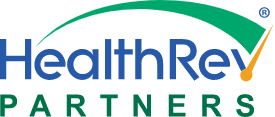What is the Home Health OASIS?
OASIS stands for Outcome and Assessment Information Set.
The Home Health OASIS is a standardized data set that measures quality and outcomes. It contains information regarding the patient such as the clinical condition, comorbidities, physical and mental state, functional status, living situation and health care needs. Many agencies use the data to identify areas where they can improve patient care. OASIS data is also publicly reported on Medicare Care Compare. And finally, it is used to determine payment.
Today you will learn everything you need to know about successful OASIS documentation in home health.
Let’s dive in.
When is an OASIS required?
In home health billing, OASIS data is required for Medicare and Medicaid patients, 18 years and older, receiving skilled services. The only exception is for patients receiving services for prenatal or postpartum conditions. Private payers may also require the OASIS for documentation purposes.
Skilled services refer to part-time or intermittent care that requires a medical professional and can include physical therapy, speech-language pathology, injections, and wound care among other things.
Those receiving only personal care (bathing, dressing or help with toileting), homemaker services (cooking, meal delivery or personal shopping), or chore services are excluded since these are not considered skilled services.
What role does Medicare play?
Medicare regulations mandate the reporting of the OASIS assessment as part of the home health quality reporting program (HH QRP). A Medicare certified home health agency is required to participate in the Home Health Quality Reporting Program. The OASIS is one of the two measures used within that program. The other measure is the patient survey results (or HHCAHPS).
The OASIS, along with the data submitted in Medicare claims, are used to assess the results of health care provided to a patient in the Outcome Measures. The measures are calculated from the OASIS data using the completed episodes of care from admission (or resumption) through discharge (or transfer to an inpatient facility or in some cases, death).
What important pieces of documentation are required within an OASIS for home health services?

It is important for the assessing clinician to include any and all supporting documentation that outlines the patient’s current condition and the plan of care for the episode within the visit note. This includes evidence of medical necessity and the need for skilled services.
In addition, to avoid issues with submission and to ensure maximum reimbursement, agencies should:
Have a Face-to-Face (F2F) and referral signed by a physician, nurse practitioner or physician’s assistant that clearly relates to the primary diagnosis or reason for home care
- Create a patient-specific Plan of Care (POC)
- Include clinician collaboration and supporting documentation
- Include a physician notification and documentation if there is a delay in initiation of care
A F2F must occur within 90 days prior to the Start of Care (SOC) or within the 30 days after the SOC. F2F must include the date of encounter, signature of the provider, and date of the signature. It must also outline that the encounter is related to the primary diagnosis or focus of home care, homebound status and skilled need.
Plan of Care (POC) contains the interventions and goals for the patient as well as medications, prognosis, frequency, diagnoses, mental status, supplies, DME, rehab potential, functional limitations, activities permitted, diet, safety measures, and advanced directives.
Because of the importance of OASIS documentation in order to get paid, outsourcing your Home Health OASIS reviews is typically a best practice.
Who can complete an OASIS?
Since an OASIS is for skilled services, it must be completed by a Registered Nurse (RN), Physical Therapist (PT), Speech Language Pathologist (SLP), or Occupational Therapist (OT). Currently an Occupational Therapist can only perform a SOC OASIS if there are additional disciplines ordered. Occupational Therapy cannot stand alone for an admission. However, they are allowed to perform recertifications as a stand alone service.
7 Tips to Avoid Common Mistakes

When it comes to completing an OASIS documentation, follow these best practices to ensure proper reporting and reimbursement:
- Don’t score a patient on how they may perform a task, but how they can perform the task SAFELY.
- Don’t just rely on an OASIS scrubber for accuracy. Having a credentialed OASIS professional review the OASIS is a key piece in maximizing reimbursement and ensuring accuracy.
- Don’t skip collaboration across services. By fostering collaboration across skilled nursing, physical therapy, occupational therapy, social work, etc., the patient will receive the best care and it ensures that the OASIS and supporting documentation thoroughly represent the condition of the patient.
- Don’t use vague documentation. Be as specific as possible. Over-documenting is nearly impossible.
- Don’t rely on a patient for diagnosis confirmation. You must have physician documentation or verbal confirmation of a diagnosis in order for it to be coded.
- Don’t use a patient’s requested SOC date as the physician’s ordered SOC date. The date must come from the physician.
- Don’t create a “canned” Plan of Care (POC). A patient-specific (POC) is extremely important to ensure the best possible care, but it is also something that CMS is looking at closely. Again, be as specific as possible when it comes to your documentation, especially the POC.
How to Get Started as an OASIS Reviewer
A person does not necessarily have to be clinical to become a certified OASIS reviewer, although some agencies require their reviewers to have those credentials. Reviewers should show attention to detail, be self-driven, possess a desire to achieve accuracy, are analytical thinkers, and can synthesize the clinical and demonstrative aspects of care to offer documentation rationale.
If a person is interested in becoming an OASIS documentation reviewer, they should enroll in an OASIS class or training course. Upon successful completion of the class, they should prepare for and then take the COS-C or HCS-O exam to become certified in OASIS review.


